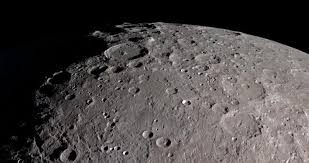
Breaking News
 Is Yen Carry Trade's unwind about to trigger a repo market meltdown? Let's dive into the mec
Is Yen Carry Trade's unwind about to trigger a repo market meltdown? Let's dive into the mec
 Chairman Rand Paul Releases New Report Revealing Hundreds of Billions...
Chairman Rand Paul Releases New Report Revealing Hundreds of Billions...
 Get Schiffty Music Video | Rick and Morty | Adult Swim
Get Schiffty Music Video | Rick and Morty | Adult Swim
Top Tech News
 This tiny dev board is packed with features for ambitious makers
This tiny dev board is packed with features for ambitious makers
 Scientists Discover Gel to Regrow Tooth Enamel
Scientists Discover Gel to Regrow Tooth Enamel
 Vitamin C and Dandelion Root Killing Cancer Cells -- as Former CDC Director Calls for COVID-19...
Vitamin C and Dandelion Root Killing Cancer Cells -- as Former CDC Director Calls for COVID-19...
 Galactic Brain: US firm plans space-based data centers, power grid to challenge China
Galactic Brain: US firm plans space-based data centers, power grid to challenge China
 A microbial cleanup for glyphosate just earned a patent. Here's why that matters
A microbial cleanup for glyphosate just earned a patent. Here's why that matters
 Japan Breaks Internet Speed Record with 5 Million Times Faster Data Transfer
Japan Breaks Internet Speed Record with 5 Million Times Faster Data Transfer
 Advanced Propulsion Resources Part 1 of 2
Advanced Propulsion Resources Part 1 of 2
 PulsarFusion a forward-thinking UK aerospace company, is pushing the boundaries of space travel...
PulsarFusion a forward-thinking UK aerospace company, is pushing the boundaries of space travel...
 Dinky little laser box throws big-screen entertainment from inches away
Dinky little laser box throws big-screen entertainment from inches away
 'World's first' sodium-ion flashlight shines bright even at -40 ºF
'World's first' sodium-ion flashlight shines bright even at -40 ºF
Chinese rover is the first to investigate the dark side of the moon and finds...

China's Chang'e 4 lunar lander has won the race to the dark side of the moon, allowing the country to be the first to uncover its secrets.
The craft, which landed on the moon in January 2019, deployed the Yutu-2 rover to investigate the Van Kármán crater near the moon's south pole.
The device used a lunar penetrating radar to probe 131 feet beneath the surface in order to determine the moon's 'internal architecture', which was found to consist of three distinct layers.
The top consists of lunar regolith, the middle harbors coarser-grained materials and greater numbers of embedded rocks and the final layer is a 130 feet thick mixture that alternates between coarse-and fine-grained material, along with embedded rocks.
Researchers said the data information gathered rover, along with data from the previous near-side Moon explorations, could help shed light on the geological history of the lunar surface.
As most of the knowledge on lunar regolith comes from Nasa's Apollo and the Soviet Union's Luna missions to the near side of the Moon, scientists were, until now, uncertain whether these observations would hold true elsewhere on the lunar surface.
Dr Elena Pettinelli, a professor in the mathematics and physics department of Roma Tre University in Italy and one of the study authors, told the PA news agency: 'These series of ejecta or deposits came from different impact craters that were created during the evolution of the Moon's surface.



